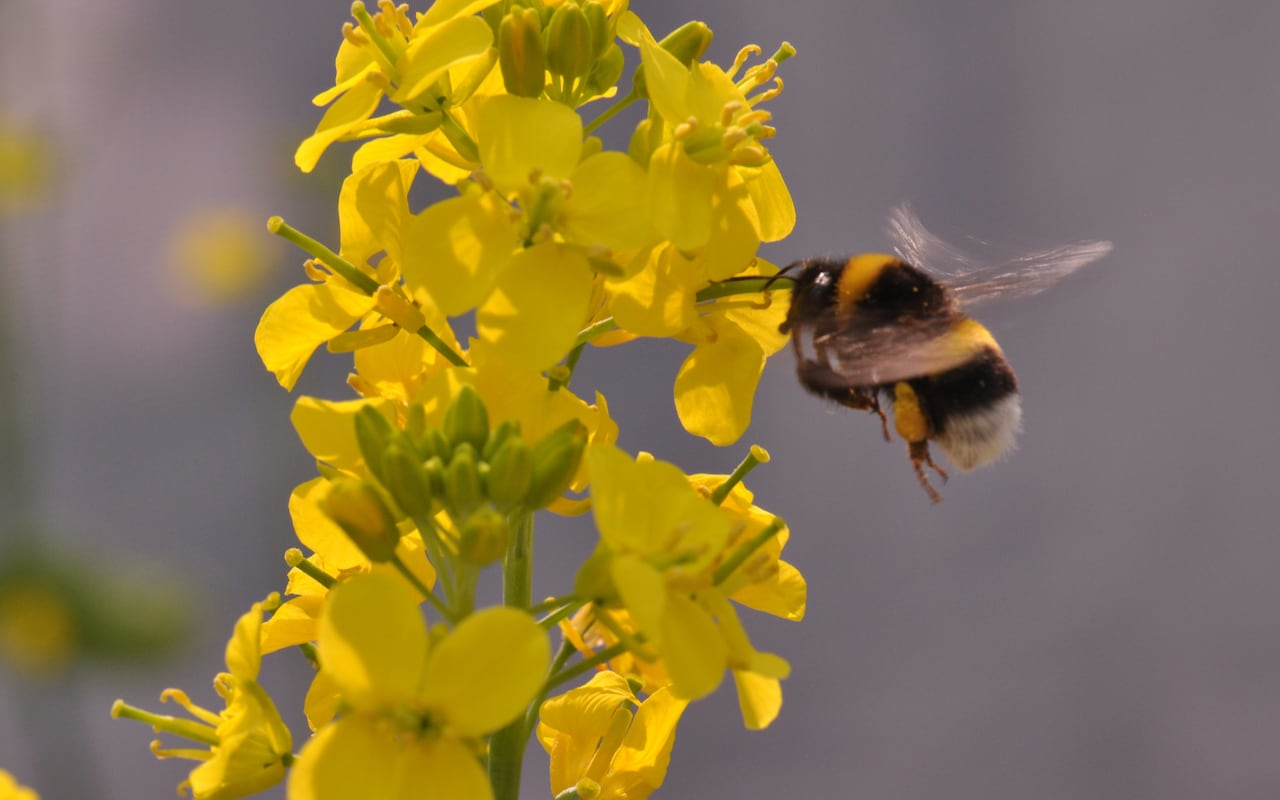Wildlife experts have been warning about the alarming decline in insects for decades.
But the fall in numbers of bugs in Britain has now reached such a troubling extent that even motorists are noticing that their windscreens are clear of squashed flies, gnats, moths and wasps.
Where a trip in high summer would once have necessitated taking a squeegee to the front window, now the glass is largely clear, drivers are reporting.
Writing in The Telegraph letters page earlier this week, Michael Groom of Teffont Evias, Wiltshire asked: “Where have all the insects gone? My windscreen remains clear whatever the speed.”
Reader Richard Acland, of Chepstow, in Monmouthshire, also noticed the vanishing bugs, and said he believed insecticides on crops were wiping out insect life, adding: “This is why cars are not bug-splattered anymore.”

And they are not alone in noting the change. Entomologists actually call it ‘the windscreen phenomenon,’ and it is has been noticed across Europe.
An amateur German group called the Krefeld Entomological Society has been monitoring insect numbers at 100 nature reserves in Western Europe since the 1980s. Although there were the annual fluctuations they discovered that by 2013 numbers began to plummet by nearly 80 per cent.
Experts mostly blame intensive agriculture and the use of pesticides over the past 50 years.
Since 2006, beekeepers in Britain have lost about a third of their managed bee colonies each year largely due to the loss of flower-rich grassland which has declined by 97 per cent from the 1930s, and the increased use of insecticides on crops.
Speaking about the lack of insects on windscreens, Matt Shadlow, Chief Executive of British insect conservation charity Buglife said: “Yes, indeed this is a well recognised phenomenon.
“Just today we had a member of the public phone up and say, unprompted, that ‘the front of my car is now devoid of insects, and there are virtually no moths in the headlights’.
“This is part of the wholesale loss of small animals in recent decades. The public know about bees and butterflies, but these are just the tips of the iceberg. Moths, hoverflies, wasps, beetles and many other groups are now sparse where once they were abundant.”

Rothamsted Research in Harpenden, Hertfordshire, has also monitored insect populations using traps across the country for more than 50 years. Chris Shortall, an entomologist from Rothamsted said they had found evidence that the number of flying insects is falling, but said ‘the windscreen phenomenon’ was difficult to prove.
“The loss of insects from our windscreens is a well-noted anecdote, however actually demonstrating it is very tricky, if not impossible,” said Mr Shortall.
A Rothamsted study showed that in the West of England, around Hereford, the amount of ‘aerial biomass’ - or flying insects - has fallen significantly since the 1970s. Other sites around Britain failed to capture declines, although the experts believe recording may have started too late to capture the impact of increased agricultural intensification.
A second report into the State of Britain’s Larger Moths, published in collaboration with the charity Butterfly Conservation, showed a fall of insects by 40 per cent in the South of England over the past 40 years.
The most recent RSPB State of Nature report, which brings together findings from 50 organisations, suggests there has been a 59 per cent decline in insects in the UK since 1970.
In 2004 the RSPB asked motorists to attach a ‘splatometer’ to the front of their cars - a piece of PVC film to collect insects, to see if they were declining. They recorded 324,814 ‘splats’, an average of only one squashed insect every five miles.
However the survey was only carried out once so it was impossible to see whether bug numbers had fallen over time.
It has also been suggested that cars have changed shape over time, and are now far more aerodynamic, meaning fewer insects are hit.
And a recent paper by Canadian scientists suggests the upsurge in traffic could itself be responsible for the fall in insect numbers. After extrapolating data from a mile of highway in Ontario, researcher from Laurentian University calculated that hundreds of billions of pollinating insects were probably being killed by vehicles each year in North America.
Colin Lawes, from Royal Holloway University of London, found that a large number of stag beetles are killed by road traffic each year in Britain, with three times as many females killed as males.

